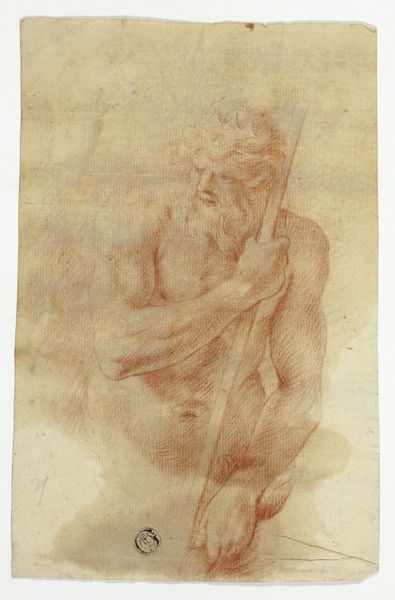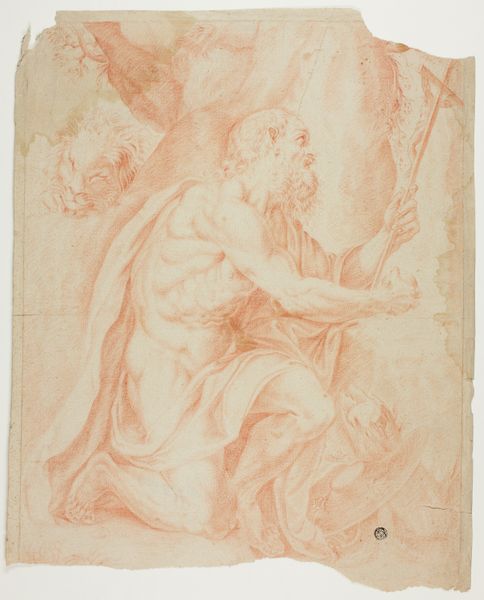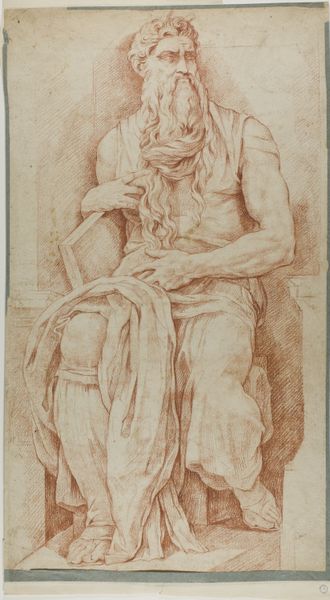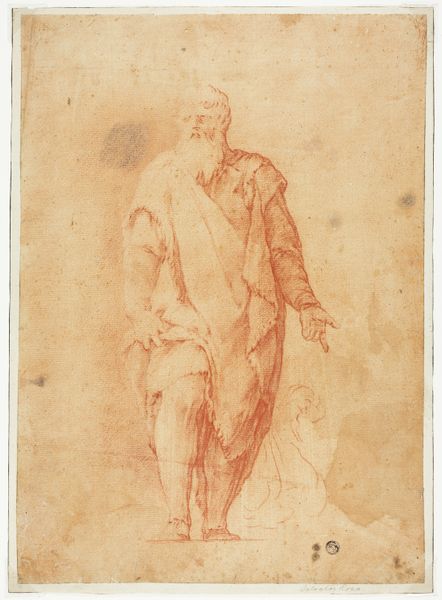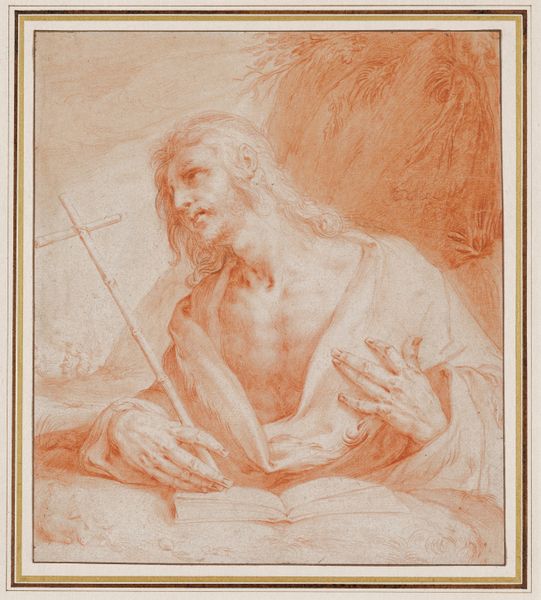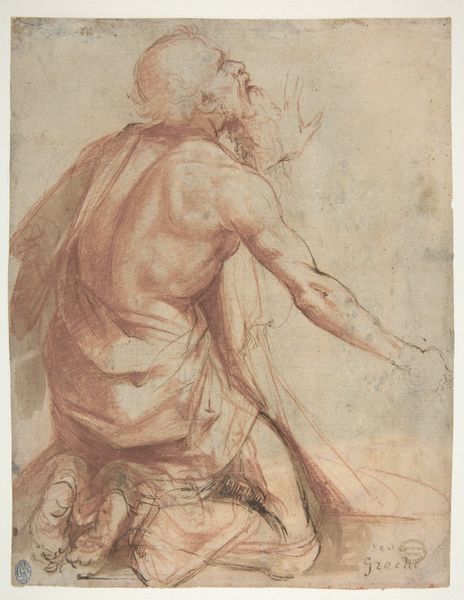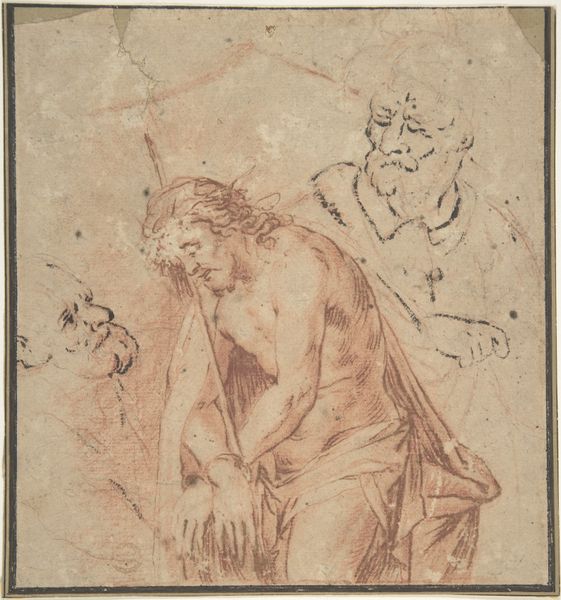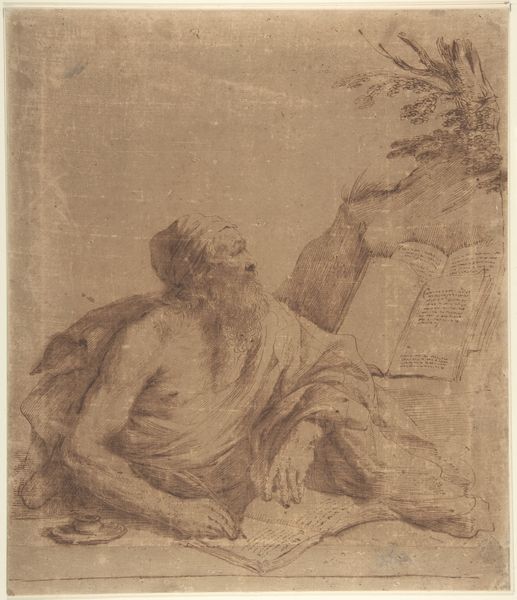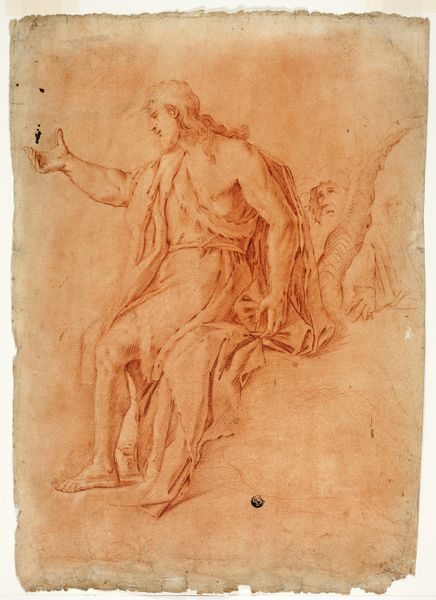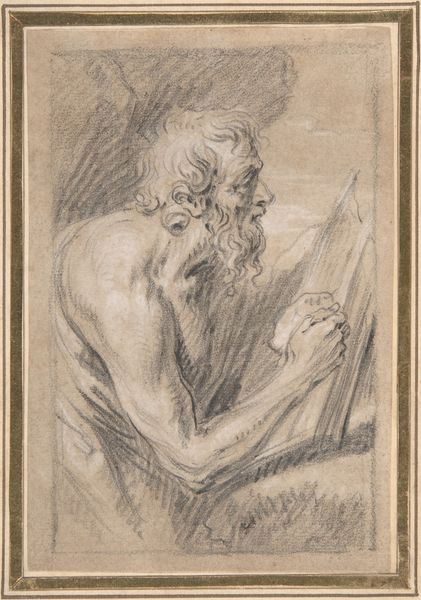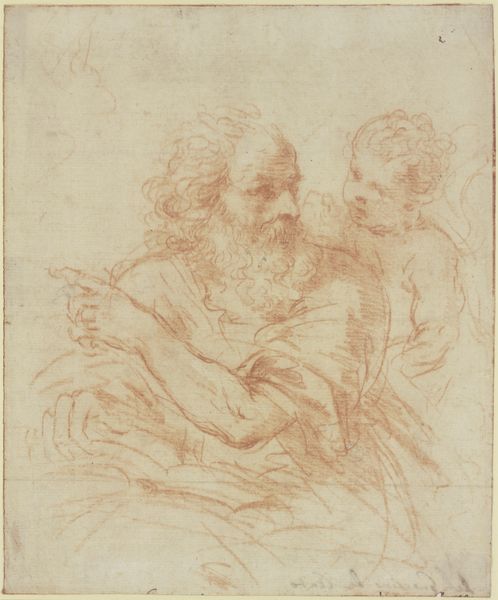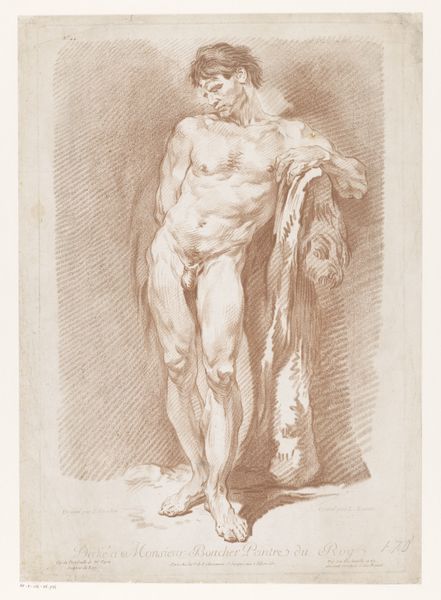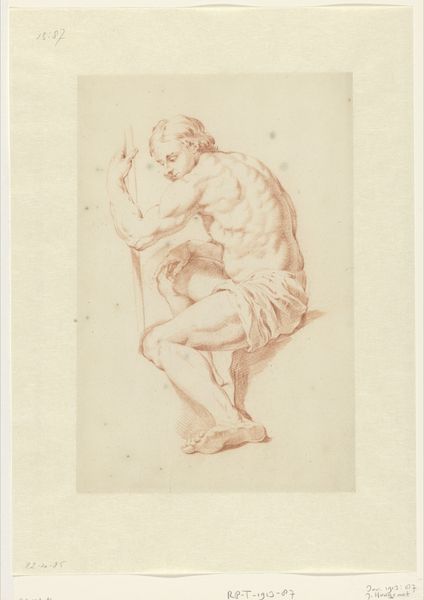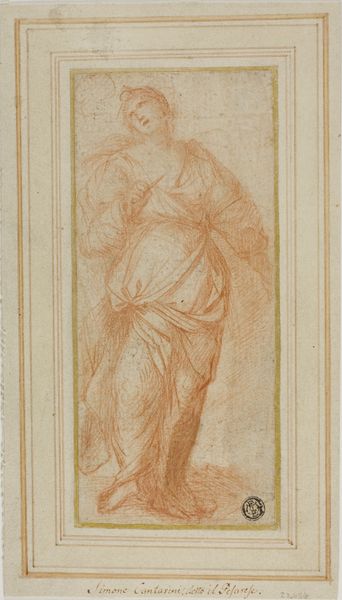
drawing, print, paper, pencil, chalk, charcoal
#
portrait
#
drawing
# print
#
charcoal drawing
#
figuration
#
paper
#
pencil
#
chalk
#
charcoal
#
history-painting
#
academic-art
#
charcoal
Dimensions: 269 × 187 mm
Copyright: Public Domain
Curator: The expressiveness in this chalk, charcoal, and pencil drawing of Saint Jerome from after 1590 by Agostino Carracci is arresting. The reddish-brown tonality immediately evokes warmth, even against the austerity associated with the saint. What are your initial impressions? Editor: I immediately notice the vulnerability in his pose—the way his hands are clasped almost protectively. Given that St. Jerome dedicated himself to translating the Bible and grappling with profound religious texts, one can imagine him wrestling with doubt and faith amidst patriarchal systems that constrained even his interpretations. The red chalk reads as blood, life and even sacrifice. Curator: I agree. Carracci’s expert handling of the materials adds to this sense of immediacy. Notice the visible layers of chalk and charcoal, almost like archaeological strata. It invites speculation: Did Carracci have a particular model? Was he concerned with realism in the presentation of Saint Jerome? Editor: Absolutely. But perhaps realism wasn’t the sole concern, rather, the process highlights the human condition through Jerome. What are the politics embedded in depictions of powerful religious figures made by powerful and influential (presumably male) artists during this time? What do images like this do to reinforce existing hierarchies? Curator: That is certainly part of it. Carracci's choice to use such accessible materials - chalk, pencil, paper, charcoal - moves away from the notion of rarefied art production. The Saint becomes more approachable. His intellect remains elevated, while the creation of his representation seems more commonplace. Editor: True. Yet the choice of St. Jerome himself reinforces an interesting narrative: the learned male scholar positioned centrally in theological history and debate, a somewhat privileged status. I wonder how depictions of St. Jerome from the same period compare across different social and gender contexts? Did women portray the Saint in vastly different ways, or did their representations mirror the works of prominent artists like Carracci? Curator: Those are valid considerations. For me, though, the immediacy of the artistic labor really stands out; we see process, materiality, and skill. That’s hard to ignore! Editor: I appreciate you pointing that out. These are interesting entry points through which to unpack complex, and sometimes contradictory meanings embedded in visual culture.
Comments
No comments
Be the first to comment and join the conversation on the ultimate creative platform.
